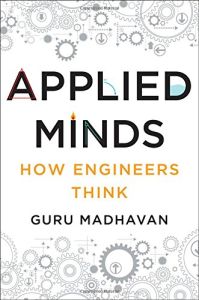Join getAbstract to access the summary!

Join getAbstract to access the summary!
Guru Madhavan
Applied Minds
How Engineers Think
W.W. Norton, 2015
What's inside?
Guru Madhavan’s sketch of the “engineering mind-set” reveals the world of problem solvers, innovators and inventors.
Recommendation
Biomedical engineer Guru Madhavan’s overview of the “engineering mind-set” dives into the world of problem solvers, innovators and inventors. He explains a lot about urban planning, medical research and advances in the finance industry. Madhavan highlights key terms and concepts by introducing a cast of more or less illustrious personages. Examples from history, different continents and a variety of disciplines bring his arguments to life. His storytelling from inside engineering is more revealing than his lighter conclusions about how engineers think. getAbstract recommends this compact read to students, policy makers, architects, medical researchers and anyone who frequently interacts with engineers.
Summary
About the Author
A distinguished researcher at the National Academy of Sciences, Guru Madhavan is a biomedical engineer and senior policy adviser.

















Comment on this summary